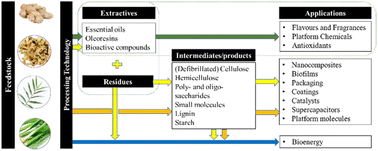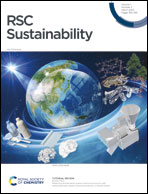Ginger waste as a potential feedstock for a zero-waste ginger biorefinery: a review
Abstract
Ginger consumption and its use in industrial applications such as essential oil and oleoresin extraction are growing globally. There will be increased volumes of ginger waste (rhizomes, stems and leaves) in the coming years. However, the valorisation of ginger waste is limited in the literature beyond its use as a ginger meal for animal feed. Herein, this review consolidates the literature on ginger waste within the context of developing a zero-waste ginger biorefinery that yields chemicals, materials and (bio)energy for emerging bio-based markets and applications. Green extraction technologies are reported; some are at an industrial scale for processing fresh ginger which could be re-used to obtain a second crop of oil or oleoresin. The application of ginger waste to produce potential value-added products such as anti-microbial materials, environmental remediation agents, supercapacitors, bioenergy and heterogeneous catalysts is presented. Limitations based on logistics, feedstock, processing technology and final output are discussed.

- This article is part of the themed collection: Circularity showcase


 Please wait while we load your content...
Please wait while we load your content...